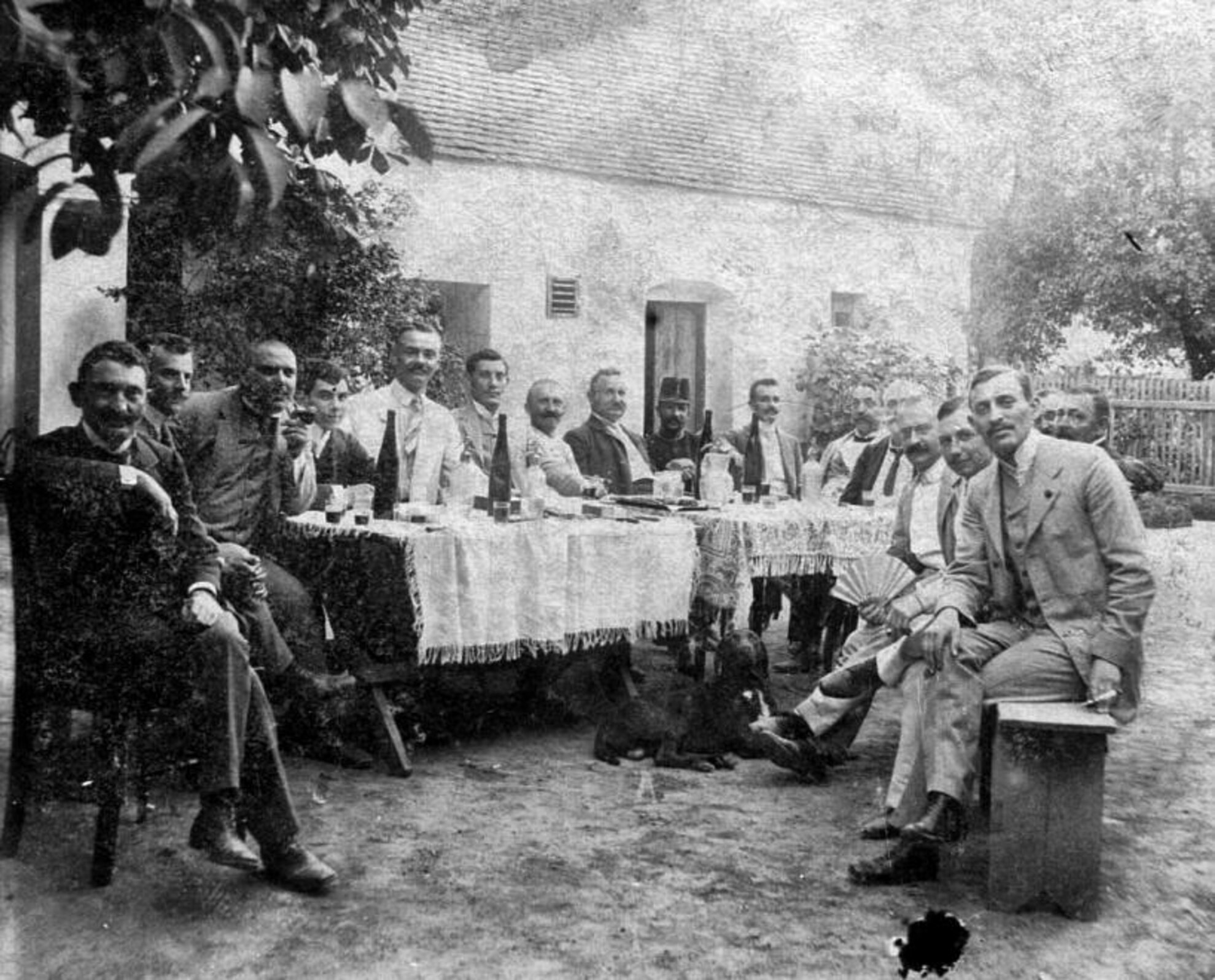The intimate, turn-of-the-century pubs in Óbuda are legendary in Budapest, and many were frequented by literary giants such as novelist Gyula Krúdy, who lived nearby. Before phylloxera ruined local vineyards, there used to be dozens of atmospheric taverns here with gardens and great local wines. None remain today, sadly – with one honourable exception: the Kéhli Vendéglő.
The history of Óbuda is closely connected with grapes and wine – after the Turkish occupation, in the 18th century, may new estates were created, mainly on German-speaking territories. Most of the newcomers were poor, simple peasants, who used their new homes to their advantage, and began to practise the art of grape cultivation and wine production. Of course, the final product needed a market, and the second generation of producers came to Óbuda to sell their wine. One of these families were the Kéhlis, who arrived in Óbuda in the 1700s from a small village near Strasbourg called Kehl.
The first family member to open a tavern was Károly Kéhli. His original drinking spot was on Kiskorona utca, a few metres from the current Kéhli restaurant, now the site for an apartment block built in the 1960s-70s. The current iteration was opened by a female Kéhli, Józsefné, who opened this restaurant in the most peaceful period in the life of the Austro-Hungarian Monarchy, in 1885, on nearby Mókus utca. This establishment evoked the bucolic world of bucolic Heurigers in the Viennese countryside, much its contemporaries in Óbuda. They would serve local wine, and cold plates generally from the Swabian, German and Austrian cuisines, sausages and cold cuts.
After the owner passed away, her son and daughter-in-law inherited the tavern, and were determined to prioritise the enjoyment of their guests. The wife of Ferenc Kéhli, affectionately known by all as Mama Kéhli, played a big role in the popularity of the venue. By the end of the 1930s, hot dishes also appeared, usually in the form of stews and hearty soups. Mama Kéhli invented an original creation – Óbuda schnapps soup, at the request of an illuminated set of guests. As the wishes of the guests were sacrosanct, she cooked up a soup that could heal any hangover, consisting of sauerkraut, smoked meat and paprika.
The other, and perhaps more telling, reason for the renown of the Kéhli can largely be attributed to Gyula Krúdy, a famous Hungarian writer who was a regular here – literally every day for the last three years of his life. In fact, legend has it that on his last evening, he brought back some Zöldszilváni wine from the Kéhli – at least, that’s the bottle they found at his bedside the next morning. Krúdy was already well-known, and his readers were happy to rediscover the lost Budapest he evoked in his novels by visiting the restaurant.
Other celebrities of the day, including opera singer Hanna Honthy, who had her own table, and writer Sándor Márai, another regular, spread the restaurant’s renown, along with actors such as Kálmán Latabár, Gyula Csortos, Gyula Gózon and Artúr Somlay.
After the war, the good times everywhere in Budapest. Obtaining quality wines became difficult, while the State tried to put its paws on the venue. Ferenc Kéhli had to give up his trading licence in order to keep his family housed in the building. The Company of Commerce & Catering took it over, opening a new restaurant under the name of Híd (‘Bridge’) where the Kéhli used to be. (The Museum of Commerce & Catering now stands alongside.)
Later in the 1960s and ’70s, Óbuda was rebuilt with the Socialist-era apartment blocks, but thankfully this section of Mókus utca was left untouched. The family left the building in 1981, selling the Kéhli name to the new owner. Tibor Horváth Cecei, who managed the restaurant in the ’80s, had an essential role in reviving the Kéhli. He worked for decades to win back its former glamour, and reopened it with the atmosphere that used to entice the most interesting characters in its golden years.




